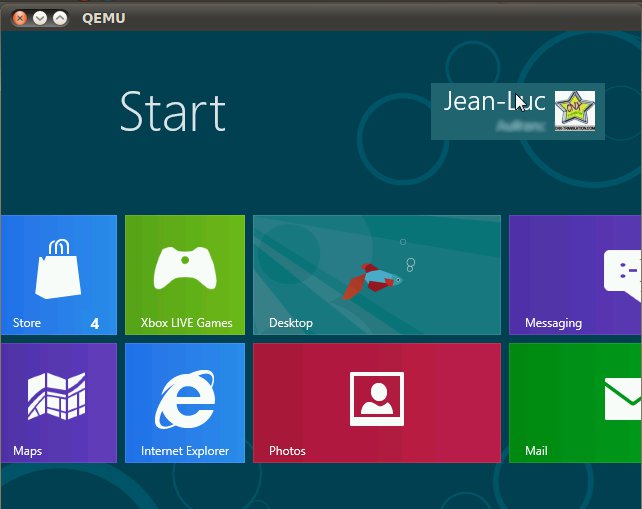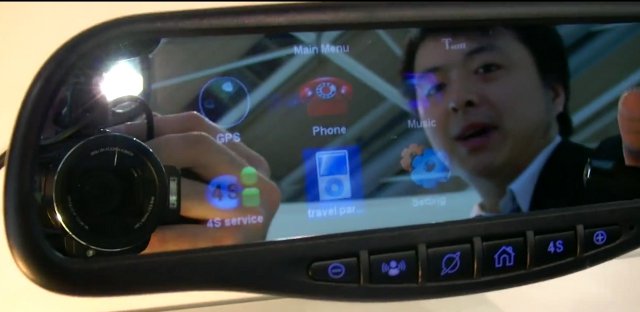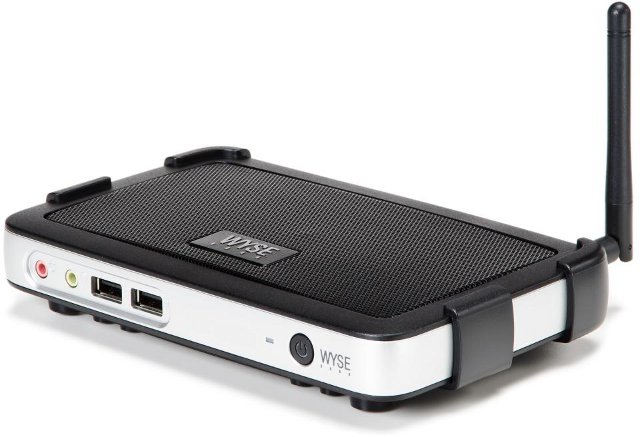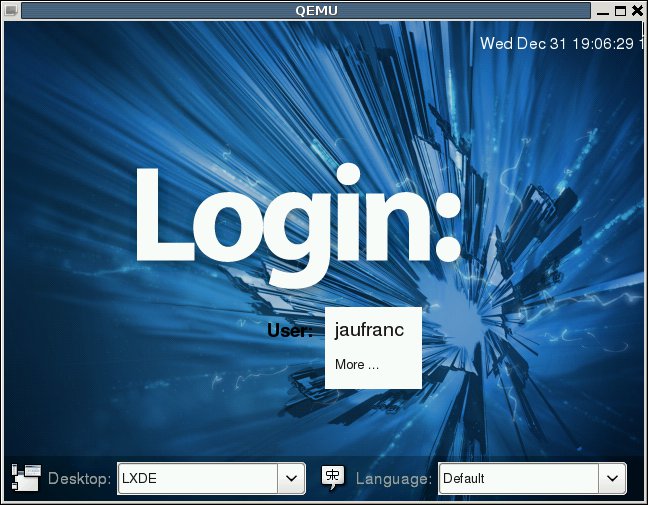Last month, I wrote the instructions to Cross-compile VMWare View for ARM Linux as I intended to “run” Windows 8 in an ARM client (most likely the Raspberry Pi) via PCoIP. However, the procedure to do so seems slightly complicated and requires to purchase a specific VMWare server software (VMware vSphere 5) or download a free trial. The good news is that there are other options such as VNC or RDP (Remote Desktop protocol) and Remmina, a Remote Connection client is available for Linux. As nothing is ever simple, another issue occured: if you are using a stable release of Linux (e.g. Debian Squeeze, Ubuntu 11.10) they come with older version of Remmina and either the connection is successful but the display is garbled (Version 0.7.x) either it crashes when connecting to Windows 8 via RDP (Version 0.8.x). The latest version (Remmina 1.0.0) fixes the problem and is available in […]
Shenzhen Wabook EPC1029 ARM Netbook Runs Android 2.3 / 4.0
Shenzhen Wabook Technology, a manufacturer with a factory based in Zhuhai, China, showcases their Wabook Netbook at Cebit 2012. The Wabook EPC1029 is a netbook running Android 2.3 (upgradable to Android 4.0) on a Rockchip RK2918 (ARM Cortex A8) @ 1.0 GHz. The device features a 10.1″ TFT LED display (16:9 aspect ratio) with a resolution of 1024×600, 3 USB host ports, Ethernet. No other technical specs are available yet. Only Android is available, but it might be possible to hack Ubuntu or another distro to run on it. You can watch the video below by Charbax of armdevices.net to see the device. Don’t worry pink is not the only color as white and black are also available. The price for 1,000 pieces (MOQ) is 93 USD and it takes around 25-30 days to get your order. They have already sold tens of thousands to a company in France. With […]
Huawei M2M Solutions: Android Rear-View Mirror, Smart Grid and more
Huawei is exhibiting their Machine to Machine (M2M) solutions at Cebit 2012 until March 10, 2012. They are showcasing Smart Meter solutions with home energy gateways, smart gas meters, smart electric meters, in-home displays.. all communicating via Zigbee. Their solution is currently being implement in the UK market. They are also exhibiting diverse modules (mainly based on Freescale i.MX5 processor) featuring Huawei 3G technology that could be used in tablets among other things. But the thing is really found interesting was their M2M solutions for the auto industry especially the Android car rear-view mirror where you can have the left half of the rear-view mirror displaying a menu so that you can access apps such as GPS maps, control your music or your phone and see information about your car. Here are some details above this rear-view mirror: Samsung SP5V210 Cortex A8 Processor 4.3″ TFT capacitive touchscreen – Resolution: 800×480 […]
Coolech HbbTV DTV Set-Top Box Powered By MStar MIPS SoC
Shenzhen Coolech Technology demoes an HbbTV Digital TV Set-top Box (STB) at Cebit 2012, in Hanover, Germany. HbbTV (Hybrid Broadcast Broadband TV) is a new European standard for web-based smart TV applications for TVs and set-top boxes. There are already plenty of STB solutions and Smart TVs offering Over-The-Top (OTT) features where TV channels and internet data are superimposed, but those are usually proprietary and HbbTV offers a standard that can be used by broadcasters all over Europe. Here are Coolech’s HbbTV DTV STB specifications: M-Star MIPS CPU clocked at 800 Mhz. HDMI DVB-T/T2 and DVB-S/S2 support. Ethernet SD Card 3x USB host IR Sensor SPDIF Audio Out There is no info on the OS except it does not run Android, so it must be Linux… Charbax interviewed the company at CeBit 2012 where you can learn more about the device and see a demo of ARD HbbTV Interop Portal […]
Wyse T10: Thin Client Powered By Marvell ARMADA 510 SoC
Wyse Technology has announced a new thin client: the Wyse T10 running Wyse zero framework (aka ThinOS), powered by Marvell ARMADA 510 SoC (ARM v7 core) and supporting virtualization solutions by Citrix, VMWare, Marvell, Microsoft and Quest Software. This is the second device based on Marvell 510 SoC after the Wyse T50 announced last year running Wyse enhanced Ubuntu Linux. The company claims the Wyse T10 is the first platform in the industry to include Wyse optimized versions of the Citrix Receiver and Microsoft Remote Desktop Protocol (RDP) 7.1 technologies, leveraging 2D hardware acceleration capabilities of Marvell ARMADA 510 SoC. This optimized 2D graphics remoting stack enables high-end features such as HD video, dual monitor connectivity and L-shaped desktop support, features that are usually only supported by more powerful Intel/AMD x86 clients. The following virtualization solutions are supported: Citrix XenDesktop 5.5 VMware View Microsoft Remote Desktop Services (RDS) Quest vWorkspace […]
ARCHOS G9 Tablets Get Android 4.0.3 with Firmware 4.0.4
Archos has finally released a new firmware for Archos 80 G9 / 101 G9 and A70B that supports Android 4.0.3 (ICS). There are also some improvements for the MediaCenter, File Manager and more. Here’s the ChangeLog: Version 4.0.4 – March 8th, 2012 Initial Ice Cream Sandwich 4.0.3 firmware release MediaCenter Video: support for MKV3D on TV with automatic switch to best 3D mode MediaCenter Video: allow to disable system notifications in video player MediaCenter Video: collection of VOB files from DVD are now gathered into a single movie item MediaCenter Music: integrate Music control panel in Lock Screen MediaCenter info dialog: allow to edit the name used for performing the Movie and TVShow online search File Manager: display a notification when file copy continues in background File Manager: improved drag and drop support File Manager: new option to prevent indexing of some storage/sdcard folders by multimedia library Applications: more robust […]
How to build qemu-system-arm in Linux
Most (all?) Linux distributions have a binary package for qemu-system (including qemu-system-arm) in order to emulate non-x86 targets such as ARM, MIPS, PPC, Alpha and more. However, in some case you may need to very latest version of qemu-system and it may not be able yet for your distribution. Here’s how to do to build qemu-system-arm without building all qemu-system-***: Download the latest stable version of qemu (qemu 1.0.1 at the time this post was written):
|
1 |
wget http://wiki.qemu.org/download/qemu-1.0.1.tar.gz |
or get the latest source code (development tree) which has the very latest features and bug fixes, but may not work or compile:
|
1 |
git clone git://git.qemu.org/qemu.git |
or get the latest source code from linaro (which may be more up-to-date for ARM targets):
|
1 |
git clone git://git.linaro.org/qemu/qemu-linaro.git |
Configure qemu to build ARM targets:
|
1 2 |
cd qemu ./configure --target-list=arm-softmmu,arm-linux-user |
Build and install qemu-system-arm:
|
1 2 |
make -j 2 sudo make install |
Verify the latest version of qemu-ssytem-arm is installed:
|
1 2 |
# qemu-system-arm --version QEMU emulator version 1.0,1, Copyright (c) 2003-2008 Fabrice Bellard |
Instructions to Run Raspberry Pi Fedora 14 Remix in QEMU
As mentioned in my previous post, the Raspberry Pi Foundation has just released the Fedora 14 Remix SD card image that can be installed either via installer (easiest method) or using dd / windd as with the previous image. In this blog post, I’ll give the instructions how to run Raspberry Pi Fedora 14 Remix in QEMU using a similar method than the one I used for Debian Squeeze. I tested since in machines with Ubuntu 10.04 LTS and Debian 6.0.4. Download the image using BitTorrent raspberrypi-fedora-remix-14-r1.img.gz.torrent or via the HTTP link available on Raspberry Pi Download page. Decompress the image:
|
1 |
gzip -d raspberrypi-fedora-remix-14-r1.img.gz |
Download kernel 3.0.4 image for qemu, if you don’t have it yet.
|
1 |
wget http://dl.dropbox.com/u/45842273/zImage |
Since the rootfs is full (in the real board it will be resized to the size of the SD Card), we need to increase the size of the rootfs partition. First create and empty 3G […]









